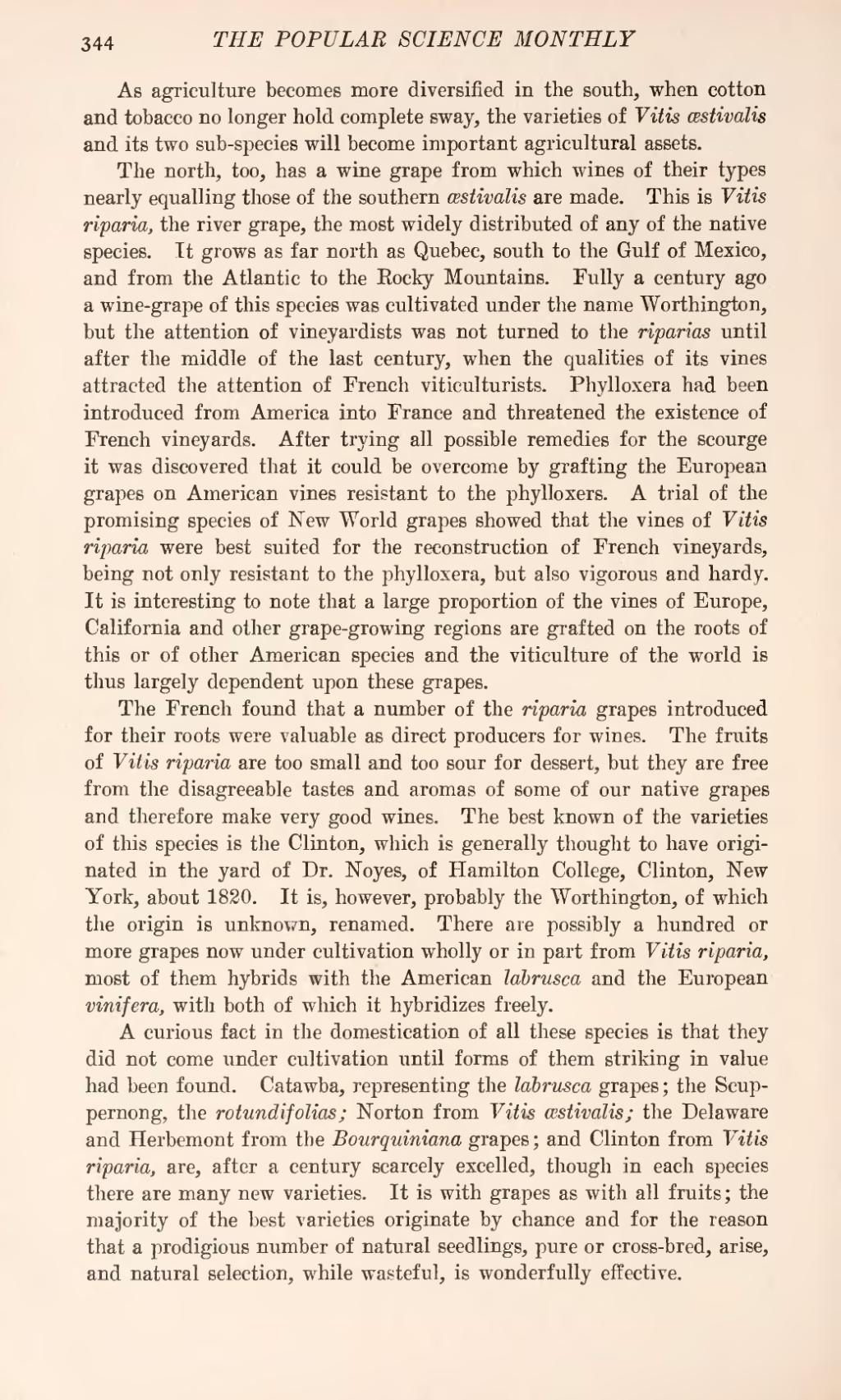As agriculture becomes more diversified in the south, when cotton and tobacco no longer hold complete sway, the varieties of Vitis ætivalis and its two sub-species will become important agricultural assets.
The north, too, has a wine grape from which wines of their types nearly equalling those of the southern æstivalis are made. This is Vitis riparia, the river grape, the most widely distributed of any of the native species. It grows as far north as Quebec, south to the Gulf of Mexico, and from the Atlantic to the Rocky Mountains. Fully a century ago a wine-grape of this species was cultivated under the name Worthington, but the attention of vineyardists was not turned to the riparias until after the middle of the last century, when the qualities of its vines attracted the attention of French viticulturists. Phylloxera had been introduced from America into France and threatened the existence of French vineyards. After trying all possible remedies for the scourge it was discovered that it could be overcome by grafting the European grapes on American vines resistant to the phylloxers. A trial of the promising species of New World grapes showed that the vines of Vitis riparia were best suited for the reconstruction of French vineyards, being not only resistant to the phylloxera, but also vigorous and hardy. It is interesting to note that a large proportion of the vines of Europe, California and other grape-growing regions are grafted on the roots of this or of other American species and the viticulture of the world is thus largely dependent upon these grapes.
The French found that a number of the riparia grapes introduced for their roots were valuable as direct producers for wines. The fruits of Vitis riparia are too small and too sour for dessert, but they are free from the disagreeable tastes and aromas of some of our native grapes and therefore make very good wines. The best known of the varieties of this species is the Clinton, which is generally thought to have originated in the yard of Dr. Noyes, of Hamilton College, Clinton, New York, about 1820. It is, however, probably the Worthington, of which the origin is unknown, renamed. There are possibly a hundred or more grapes now under cultivation wholly or in part from Vitis riparia, most of them hybrids with the American labrusca and the European vinifera, with both of which it hybridizes freely.
A curious fact in the domestication of all these species is that they did not come under cultivation until forms of them striking in value had been found. Catawba, representing the labrusca grapes; the Scuppernong, the rotundifolias; Norton from Vitis aestivalis; the Delaware and Herbemont from the Bourquiniana grapes; and Clinton from Vitis riparia, are, after a century scarcely excelled, though in each species there are many new varieties. It is with grapes as with all fruits; the majority of the best varieties originate by chance and for the reason that a prodigious number of natural seedlings, pure or cross-bred, arise, and natural selection, while wasteful, is wonderfully effective.

